In the early fall, cool mornings and cool evenings finally return. After the intense summer heat, it feels great to go outside and enjoy the day.
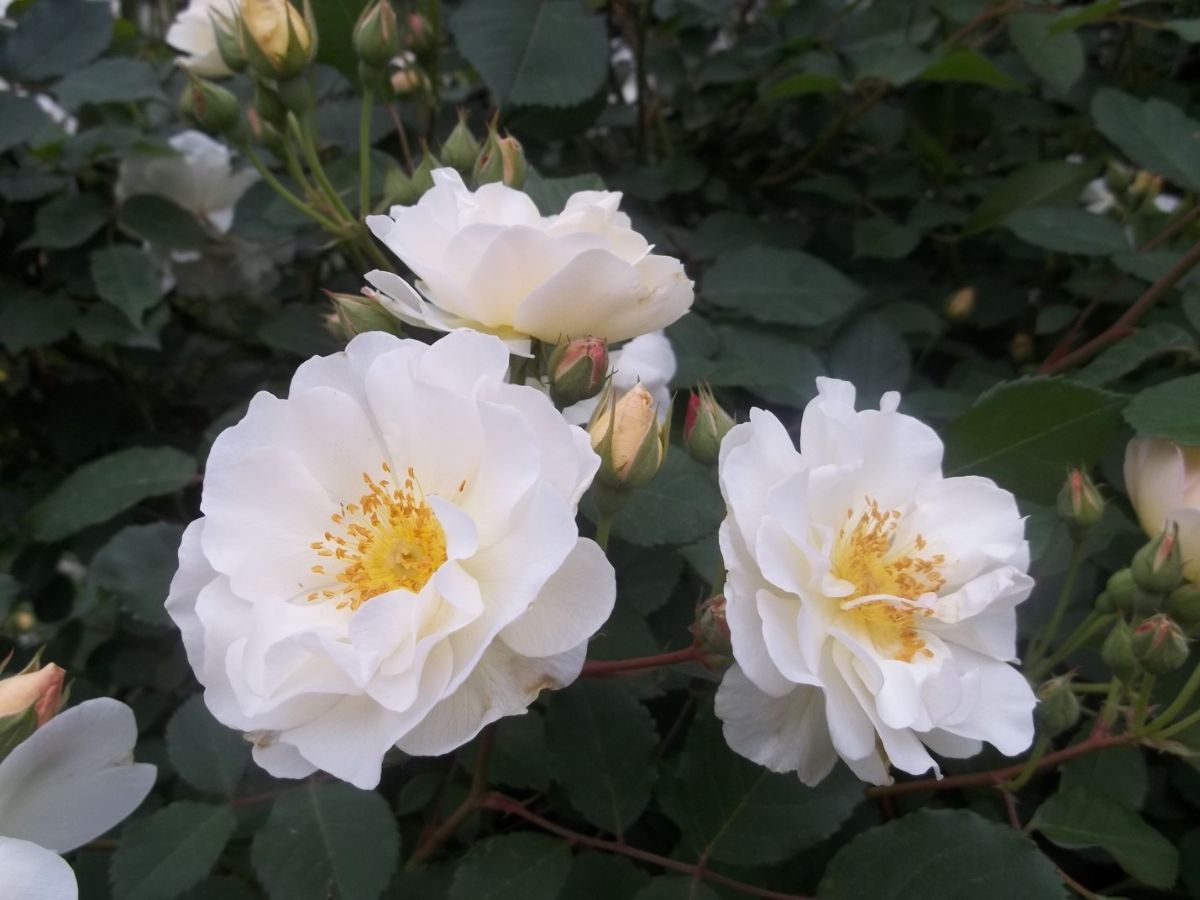
But then you look at your sad rose bushes that have had to deal with the full brunt of summer’s heat. The roses are all eaten up by Japanese beetles, ravaged by black spot or powdery mildew or sun scald, and dropping leaves from the late summer heat.
Take heart! Fall is the perfect time to fix up your roses and make them all gorgeous again.
Jump to:
Plants Love the Cool Temps Just As Much As You Do
Early fall's cool temperatures will give your roses a second wind, so they’ll start growing and blooming again. What’s more, the cooler temperatures will allow the plant to put more energy toward larger blossoms.
Here are some tips to get your roses ready for their big spurt of fall blooms:
Clean Up the Rose Garden
Start your autumn rose maintenance by tidying up the garden.
Pull up those weeds that shot up in August. Cut dead canes out of your rose bushes.
Clean up all the leaves and petals that have fallen off the roses in order to get any fungal spores and insect eggs that are on the leaves out of your garden.
Stop Deadheading Your Garden Roses in Late Summer/Early Autumn.
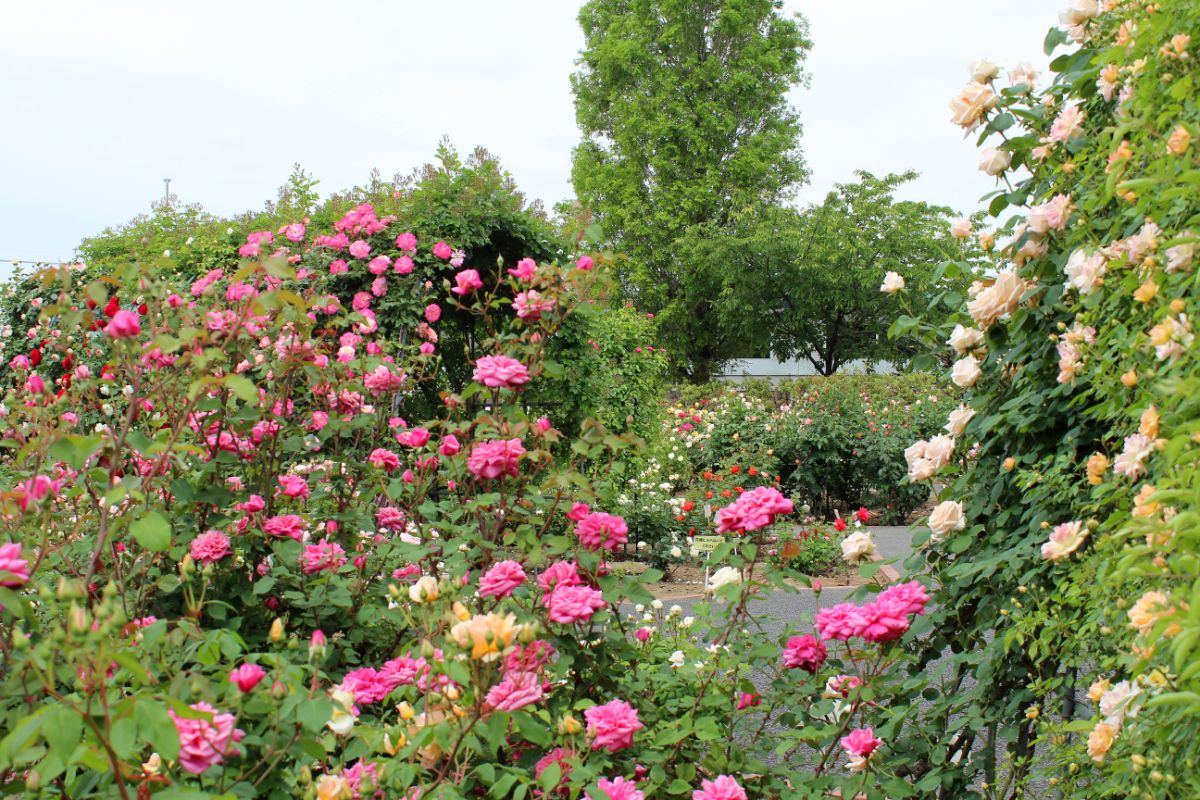
After about September first (later in warmer regions but about a month before your first frost date), stop deadheading your roses. That is, stop cutting off the dead blossoms on your rose.
It’s okay to tidy up the rose bush, but you’ll want to leave the dead flowers on the rose bush. This causes the rose to start making seeds, i.e., rose hips, and then the rose bush moves into “winter prep” mode.
You’re more likely to see rose hips on antique and heirloom roses. Many new landscape roses are self-cleaning – that is, the old blossoms dry up and drop off the stem.
Rose hips are the colorful rose fruits that you get in late summer and early fall. They resemble crabapples, starting out green and turning orange-red later.
Fertilizing Is Over for the Year
You want the rose to not be putting out new green sprouts. You want to give it enough nutrients because winter is coming, and you don’t want a bunch of green soft growth that’s going to get blasted by frost in the coming months.
If you know your frost date or your hard freeze date, stop fertilizing six weeks before that.
In the middle range zones around zone 5, that means no fertilizer after mid August. Adjust by a week or two later for warmer zones, and earlier for colder zones.
You can give roses foliar feedings, that is, liquid fertilizer that’s sprayed onto the rose leaves where it’s absorbed into the rose – but only at half strength.
This time of year, you want the rose to not be putting out soft, succulent growth. You want them to harden up for winter.
Take Care of the Soil
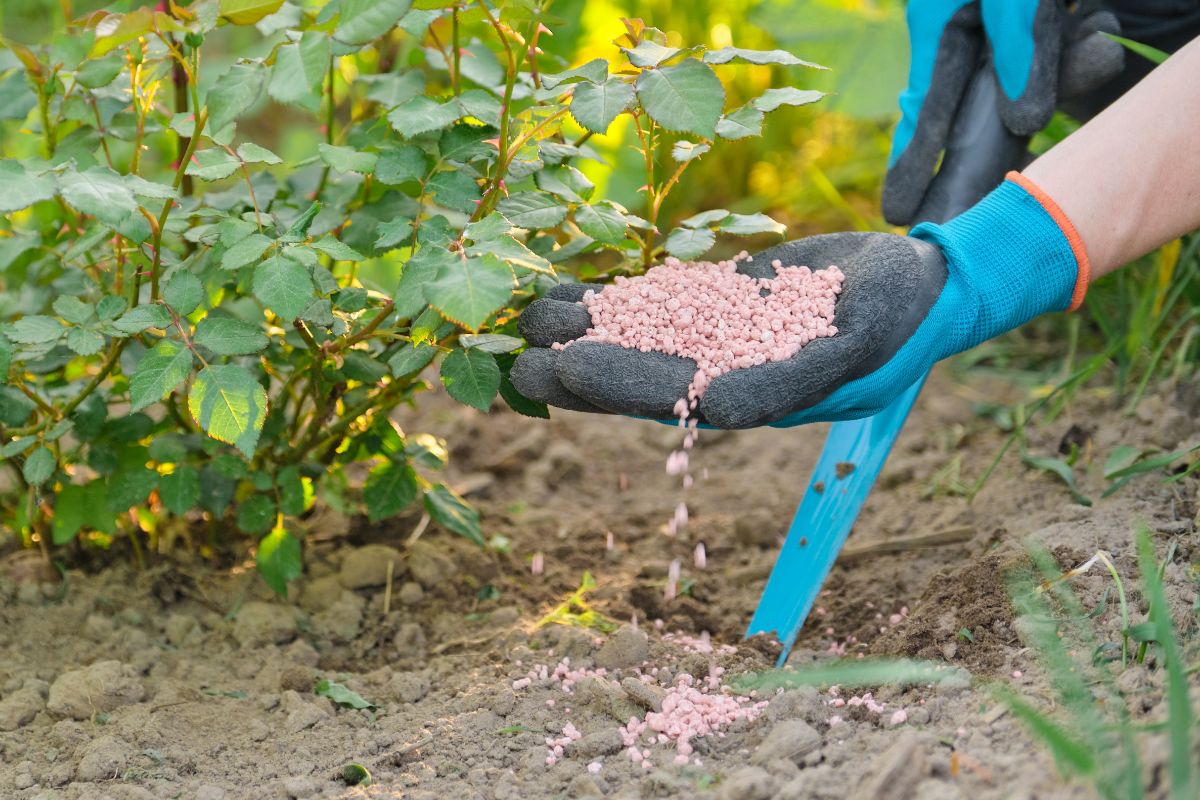
Soil care is one of the most important – and often the most overlooked – aspects of rose care. If a rose bush doesn’t like the soil they’re planted in, they can’t just get up and move to a more fertile patch.
Roses need fertile soil with lots of organic material because they are heavy feeders. So, make it a priority to feed the soil around the rose as well.
Roses Love Compost
Add compost to the soil in the fall. It’s one of the best types of organic material you can use.
Compost is also a great way to add organic material to the soil. Small creatures break the compost down into humus. Earthworms, which are especially valuable in the garden, mix it into the ground. Earthworms produce castings that are a valuable source of nutrients for plants.
The nature of the soil is to have life in it. This hidden ecosystem underground yields a lot of benefits for your roses – or any plants – through the interactions with these small insects and microbiota that nourish the rose roots.
Get Your Soil Tested!
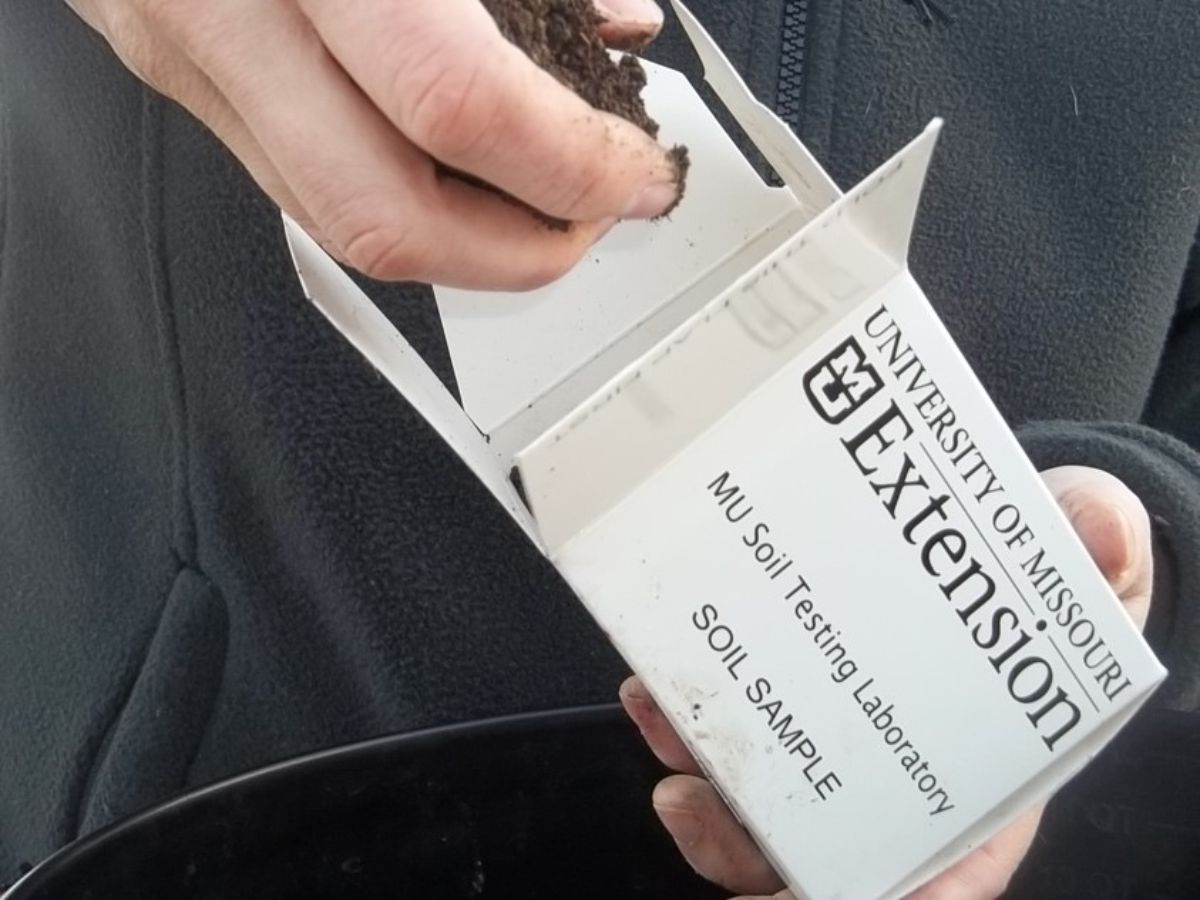
Autumn is also a good time to get your soil tested. Call your county extension agent, local lab, or university and get your materials. They'll often send you a box or they may have you send samples in baggies.
Scoop up a little soil from different parts of your garden. Put it in the box or bag, mix it up, and send it back to the county extension agent or lab.
After about six weeks, you’ll get the result of your soil test. Then, you can amend the soil in the fall, giving the slower-acting nutrients time to take effect. For instance, it takes lime two or three months to get constituted into the soil. This gives you a head start for spring.
Plan your sampling so that you have the results for the fall so you can make added adjustments and they have time to work by the spring.
Mulch Is the Best Addition to the Fall Rose Garden
Adding a good layer of mulch is a part of rose garden maintenance that yields incredible results. Seriously, I can go on for days about how helpful mulch is.
When I started taking care of the public rose garden at Krug Park, we had a puny rose planted on a small slope on bare dirt. The rose wasn’t much more than a couple of twigs with blackspot. The slope faced south, soaking up the blazing August sun.
I felt sorry for the rose, so I put a thick layer of mulch around the rose and over the slope. The rose perked up at once. It started putting out brand-new leaves and began growing. Then it popped out with flowers!
I’ve been sold on mulch ever since.
Great Organic Mulches
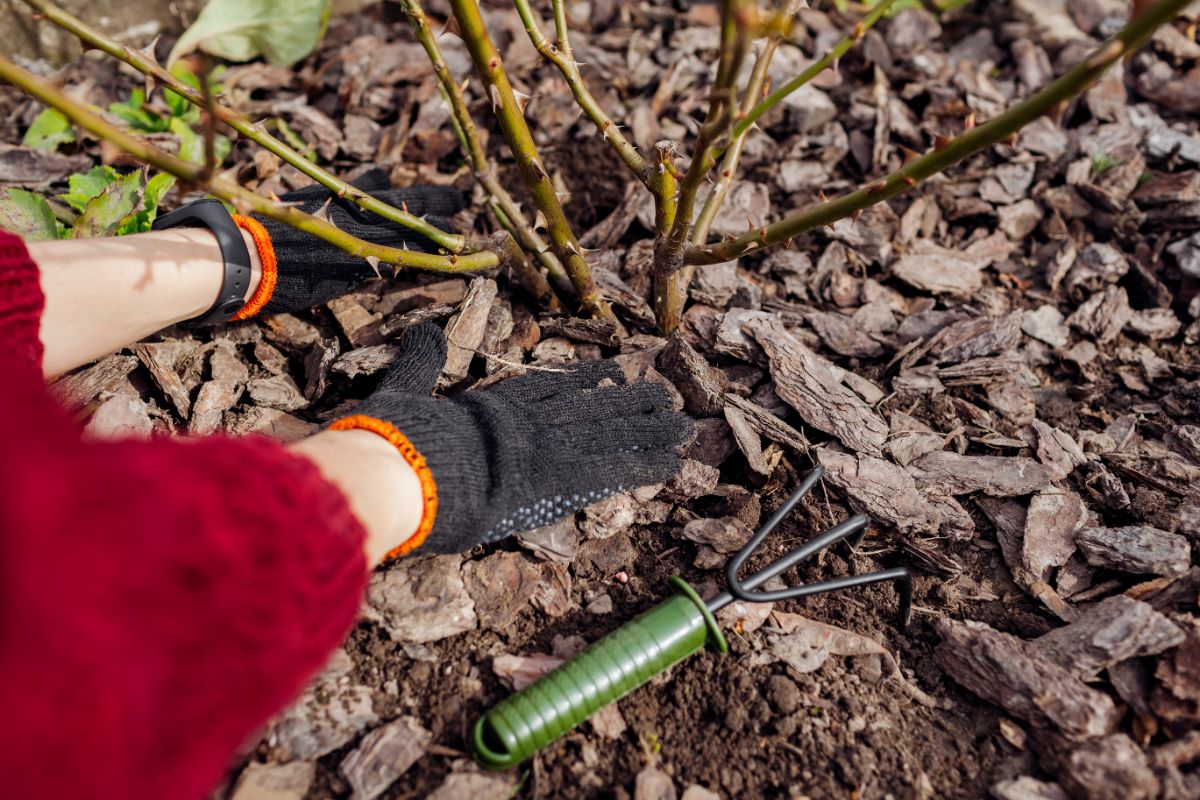
Again and again through the years, I’ve seen how a healthy layer of mulch cheers up a plant.
Mulch suppresses weeds, adds nutrients to the soil, shades the roots from the hot sun, and insulates them against the winter freeze-thaw cycle.
Mulch holds in water and keeps soil from splashing up on the rose’s leaves during a downpour.
Good organic mulch doesn’t even have to cost anything. You can use grass clippings (as long as the grass wasn’t sprayed), pine needles, straw, wood chips, wood shavings, compost, mulched leaves, and other organic materials.
If it breaks down into the soil and looks nice, you can use it as a mulch.
Put a little extra mulch around your roses in the fall because frost is coming. You don’t want to be lugging 50 bags of mulch in from the car the night before the first hard freeze.
It's easier to add extra mulch to the garden in the autumn months. Then, when a freeze is in the forecast, all you have to do is get a rake and mound the mulch up to cover the rose canes.
Dial Back the Watering.
In the fall, roses won’t need as much water as they did in summer. But give them a deep watering once a week.
If you have a lot of roses or plants, a drip line or a soaker hose will cut down on the watering work you have to do. You can just put the drip line on the spigot, turn on the water, and walk away. The water trickles into the soil all day, watering the soil deeply. Just be sure to shut the water off at night.
Watch Out for Rose Diseases
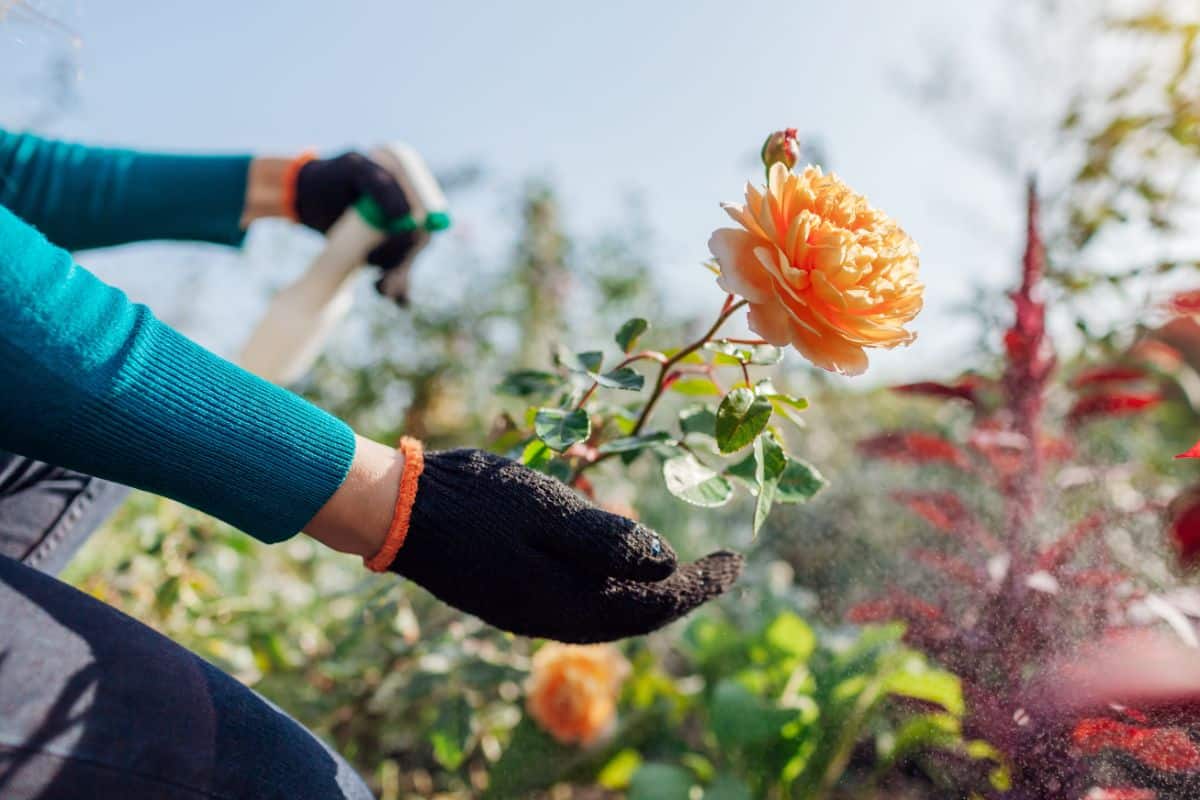
It’s not just roses that perk up when the temperatures get cooler. Fungal diseases also make a comeback in the fall.
Blackspot is a common fungal disease, leaving black spots on the leaves.
Powdery mildew also makes a comeback in fall, turning leaves white.
Clip off leaves that have blackspot or powdery mildew on them and discard them.
Don’t compost them because even a hot compost heap won’t kill the diseases, so the compost could potentially reinfect the roses next year.
If buds can’t open due to wet and rainy conditions, clip them off. This preventative maintenance can keep your rose from getting botrytis dieback.
Continue spraying your roses regularly with fungicide until the first hard frost.
An Organic Treatment for Blackspot
Here's an easy DIY treatment you can use on your roses in the fall:
- Combine one part of cow’s milk with two parts of water.
- Add a drop or two of dish soap to make the solution “wetter” (it breaks the surface tension of the water so it sticks to the roses better).
- Mix and spray your roses weekly with this.
This controls blackspot as well as any chemical fungicide.
Be sure to use up the solution every week and rinse out your sprayer after use.
Plant-based milk (rice, soy, almond) should NOT be substituted for milk in this recipe – they will not work.
Systemic Fungicides are Helpful
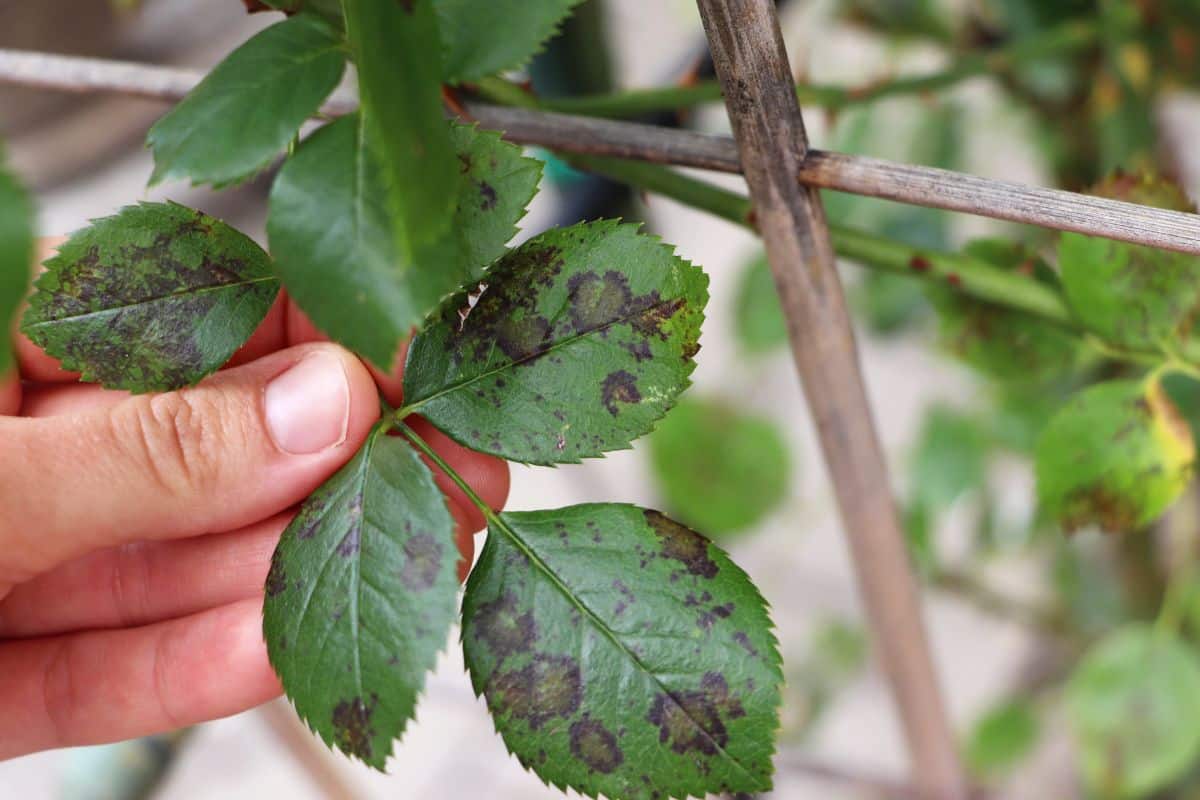
If blackspot or powdery mildew have been running rampant on your garden roses, even despite your spraying, try using a systemic fungicide. This is absorbed through the roots or leaves of the rose and sent all through the plant’s system, where it stays over a period of weeks or longer. Rain can’t wash it off!
There was one year when I simply could not keep up with spraying in the Krug Park rose garden, so in desperation, I applied a granular systemic fungicide to the roses – and it turned out to be a godsend. It kept blackspot and powdery mildew off my roses, allowing me to cross one time-intensive task off my endless “to-do” list.
Insect Pests in the Rose Garden
Fall means you’ll be seeing more insect pests in the garden. Here are two common of the most common:
Thrips
Thrips are tiny, yellow-brown insects that you can barely see unless you blow on them to make them move. They feed on rose petals by scraping off the surface cells in order to suck the juice. Rose buds with thrips look distorted and won’t open.
Thrips are a pain. Remove and destroy infected flowers.
Insecticidal soaps can help control them, but they must be sprayed to thoroughly cover rosebuds and leaves, top and bottom, and will need to be sprayed three times over five-day intervals to catch hatching eggs.
Spider mites
These look like tiny grains of salt and pepper under the rose leaves, and the tops of the leaves look mottled. They string tiny webs between and under rose leaves.
Blast spider mites with a jet of water. Rub them off with your fingers and rinse off the leaves.
Later, add a few drops of dish soap to a gallon of water and pour it over the leaves as you rub the insect pests off. Agitating the mites while they’re being doused in water helps knock them off the plant.
Squish Insect Pests!
Don’t rely on sprays to control insects. Pests can build up a resistance to chemicals. But they can never build up resistance to being squished.
Knock destructive insects off the rose by blasting it with water. Pour soapy water over pest infestations, rubbing the leaves so the insects have nowhere to hide.
Plain old-fashioned squishing them or dropping them in a bucket of sudsy water is more time-intensive but it works.
Use several methods to knock down pest infestations, and you should be able to come out victorious.
Keep Pruning Light
Trim your roses back lightly. After a summer of intense heat, it’s a good idea to give the plants a trim to encourage blooms next month.
For the major pruning, it’s best to wait until next spring. Over winter, some canes might die back. If you’ve already pruned heavily in fall, then sometimes you might not have many roses left in spring.
Trim back bushes with extra-long canes. If a rose is waving eight-foot-long canes around like a giant squid (only with thorns), then cut the rose back to waist height and tell it, “Keep your canes to yourself!”
Dig up and get rid of any bushes that have died. This is called “shovel pruning.”
Start Looking Toward Next Year’s Roses
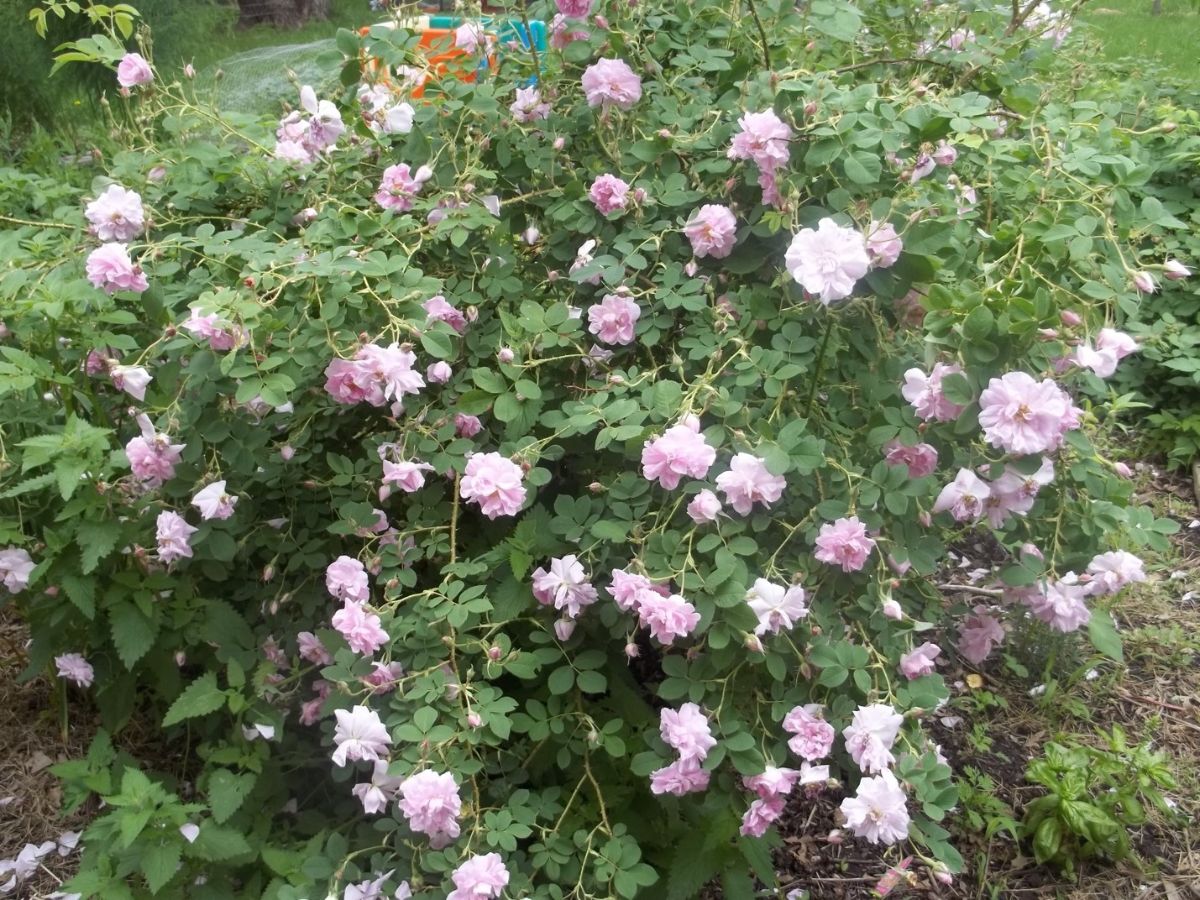
Then start thinking about what roses you want to buy for next year, just for fun.
It’s a good idea to start planning for next year while your roses and other plants are still growing. You can easily see what holes need to be filled, and you have more time to explore possibilities as far as plant choices.

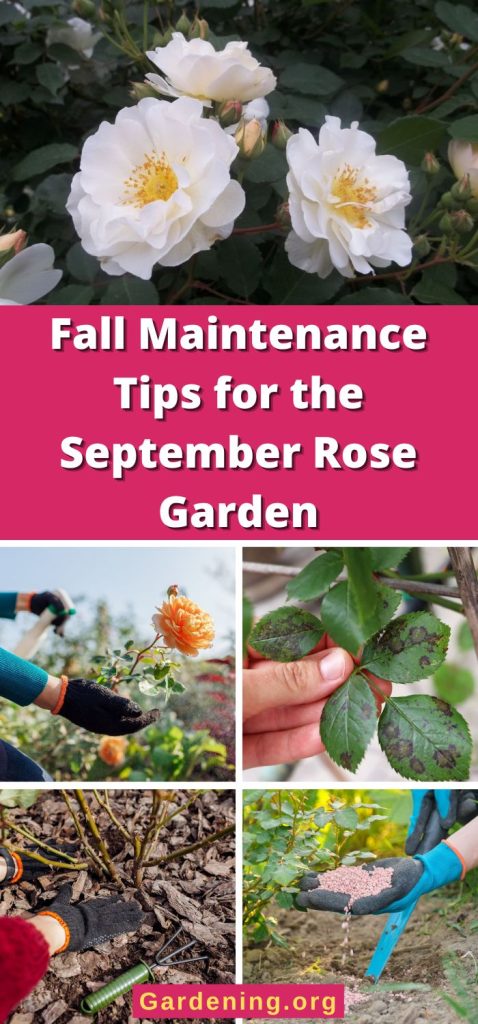

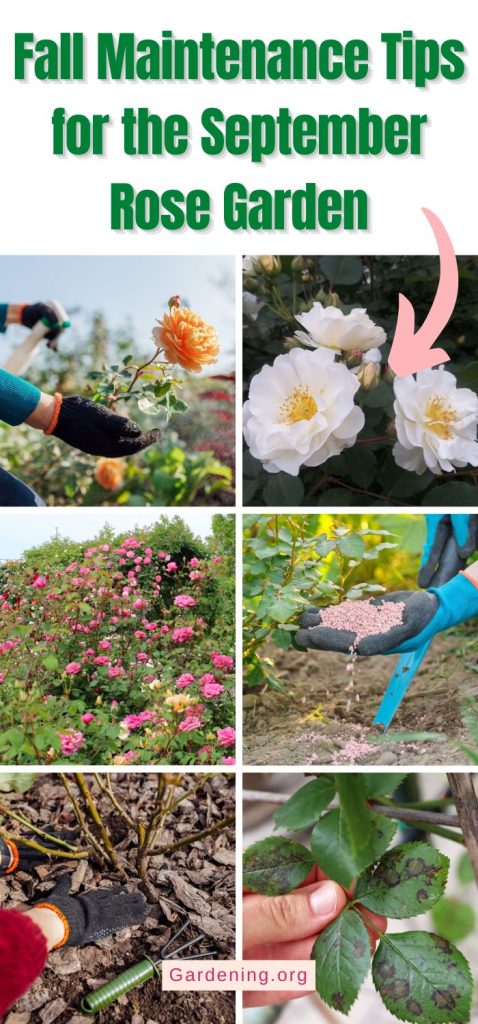
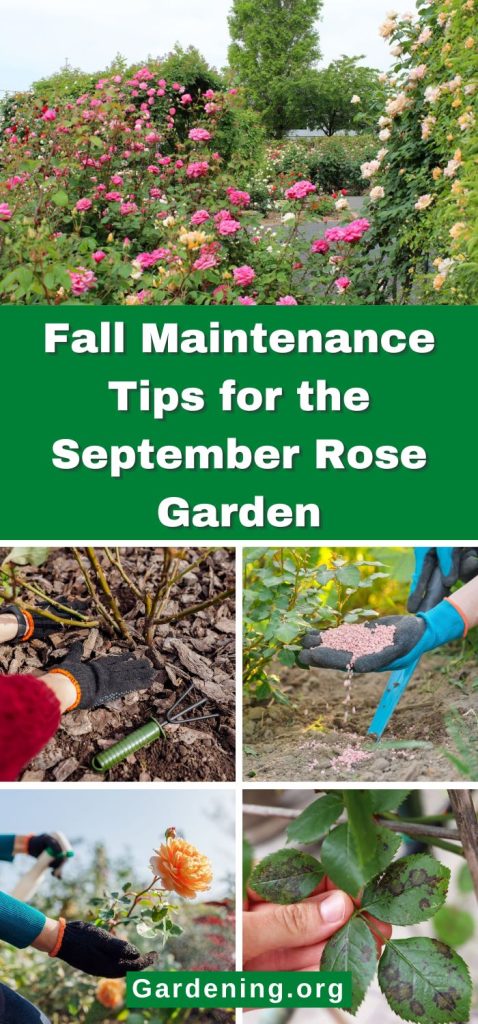




Janet Brandon
Good advice here all my roses have blackspot even though ive sprayed them and keep taking off infected leaves.
Melinda R. Cordell
Blackspot is a pain in the kazoo. You might try a granular fungicide, scratched into the soil around the rose. Water it in well.
This sounds crazy, but 1 part cow milk in 2 parts water, sprayed weekly, will suppress blackspot.
I wish lime sulfur was still on the shelf, but in late fall and again in early spring, you might try dormant oil on the leafless roses to kill off overwintering blackspot spores.
Good luck! Hope one of these helps.
Doris
Hi. Would the canned evaporated milk work? Thanks.
Mary Ward
It probably would because it changes the pH of the surface of the plant so that fungus can't live on it. Evaporated milk has a similar (if not slightly higher) pH to regular milk. It's an interesting question that I've never come across but you might try it on a single plant or part of a plant, give it a few days or to see the reaction, and then if you're feeling confident about it go ahead and spray. The only thing is, evaporated milk is more concentrated. I would think you should rehydrate it by adding water according to package directions.
Margaret Burley
An avid gardener friend , now sadly deceased , told me to mix Jeyes fluid with water , and water around the base of my roses. He said that the spores from black spot live in the soil and this would feed the rose and destroy the black spot . I have used this method many times and it works !
Mary Ward
Thanks for the tip!